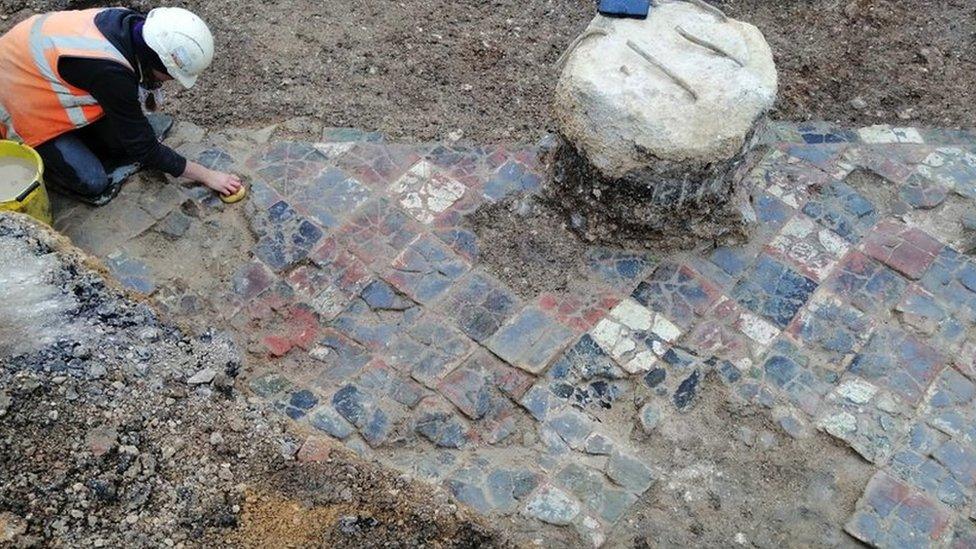Mammoth graveyard yields more fossil wonders
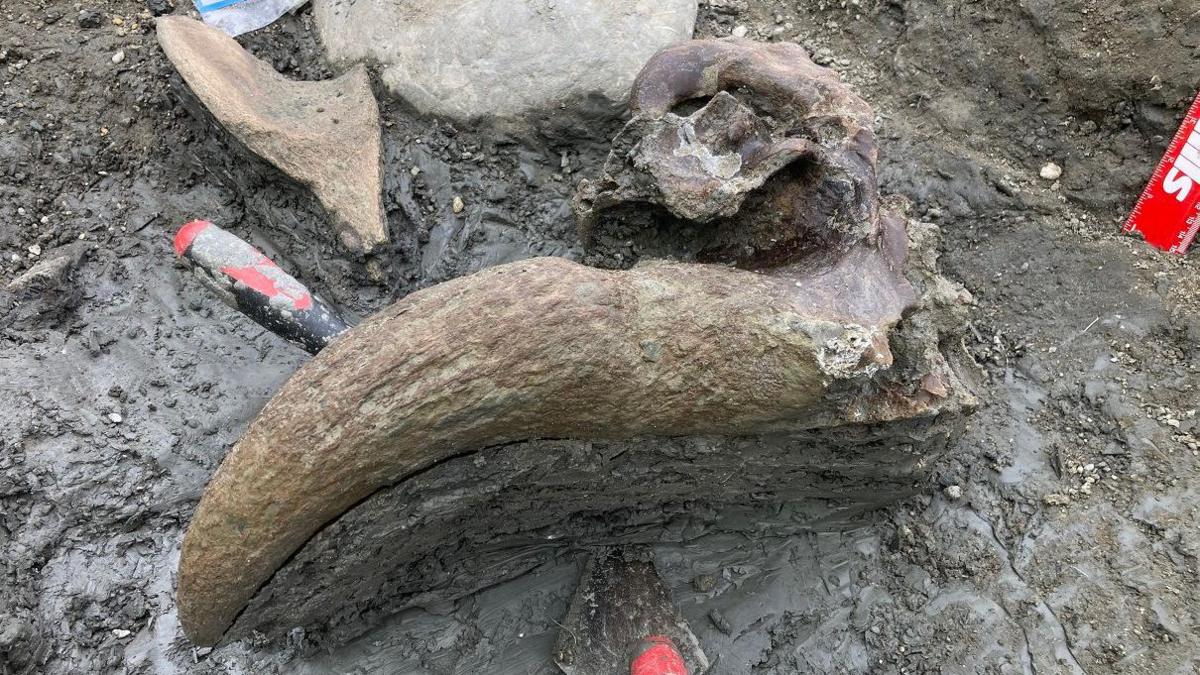
Mammoth remains have been found at Cerney Wick
- Published
Mammoth teeth and tusks are among the items discovered on a new dig at a site that inspired a Sir David Attenborough documentary.
Known as the mammoth graveyard, the site at Cerney Wick near Cirencester, is where remains of multiple steppe mammoths were found in 2019.
The site is believed to date back to around 220,000 years ago.
Other significant fossils found this time have been Neanderthal hand axes, ancient bison bones and a prehistoric shark fin.
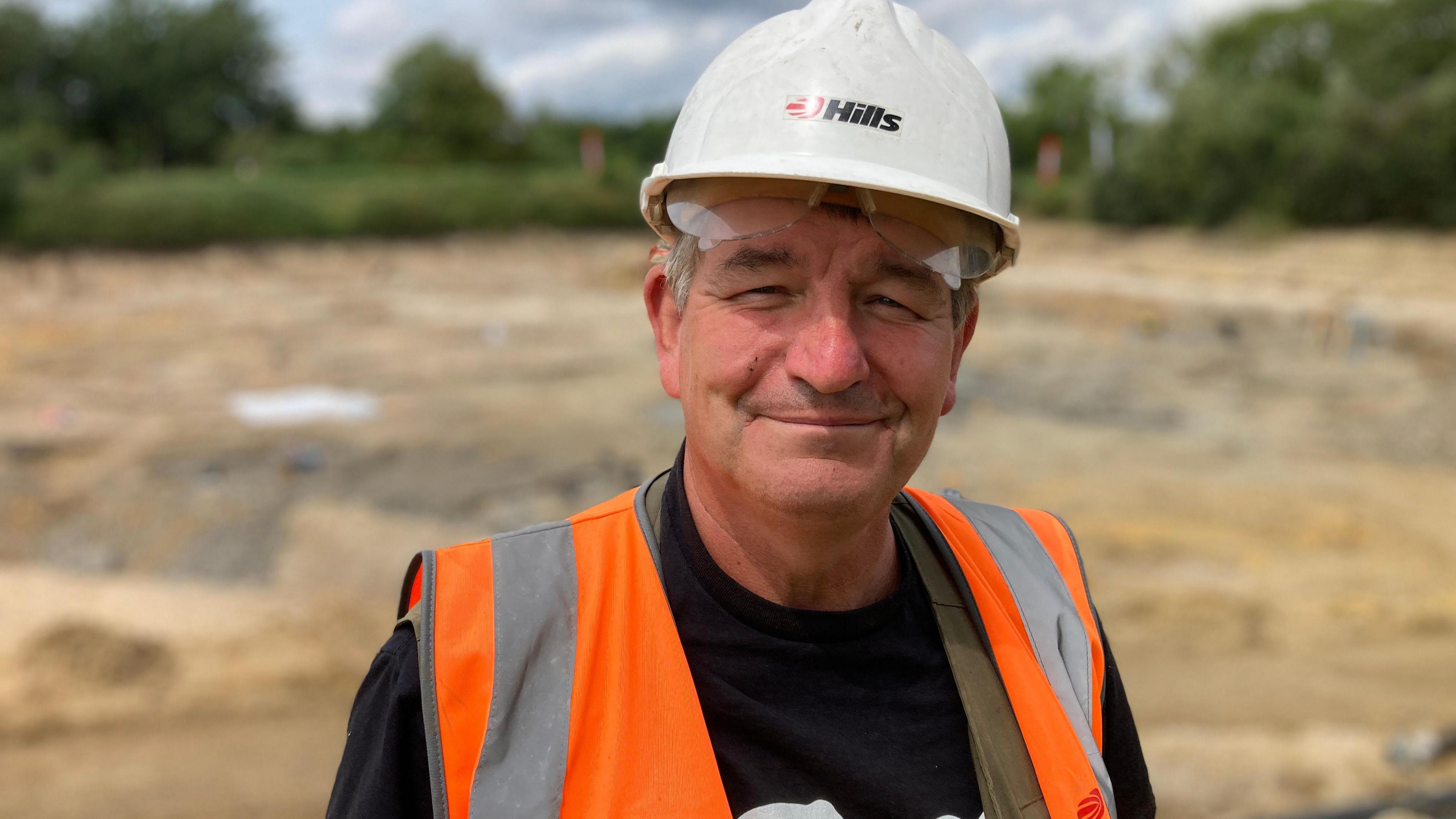
Dr Neville Hollingworth is leading the dig
“I’m absolutely blown away” said Dr Neville Hollingworth, who is leading the dig with his wife Sally.
“We’re revealing new information about what was living in this part of the world at that time” continued Mr Hollingworth.
The site was quarried for gravel and that revealed the prehistoric layers so the first dig could take place.
The original discoveries were one of the most significant Paleolithic finds in the UK.
Steppe mammoths were an ancestor of the woolly mammoth, and this site is believed to date back to around 220,000 years ago.
It was allowed to return to being a lake, before it was drained so this second major dig could be undertaken.
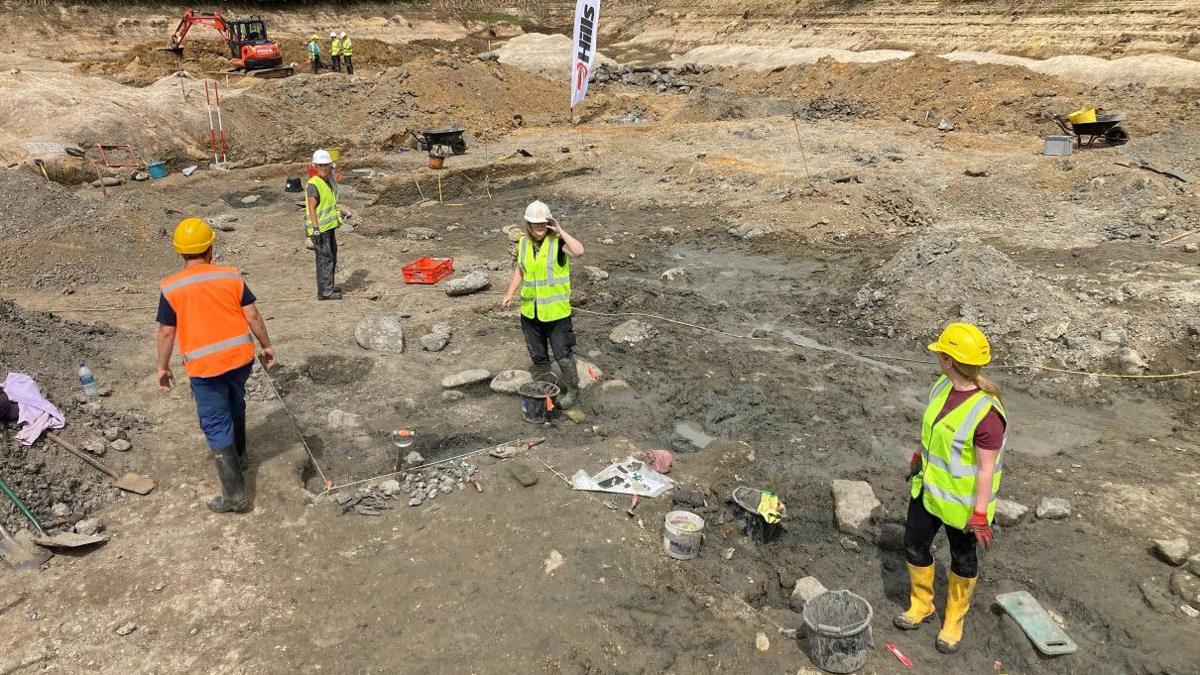
There is evidence that the site used to be a river
There is evidence that the site was a river and the fossils became trapped in the silt and rocks on the river bed.
The mammoth teeth that have been found are well preserved, some complete with roots.
They have been found alongside shoulder bones and two partial tusks, one from a small mammoth and one much larger.
Half a bison skull was found complete with horn, and a bison rib bone attached to a vertebra.
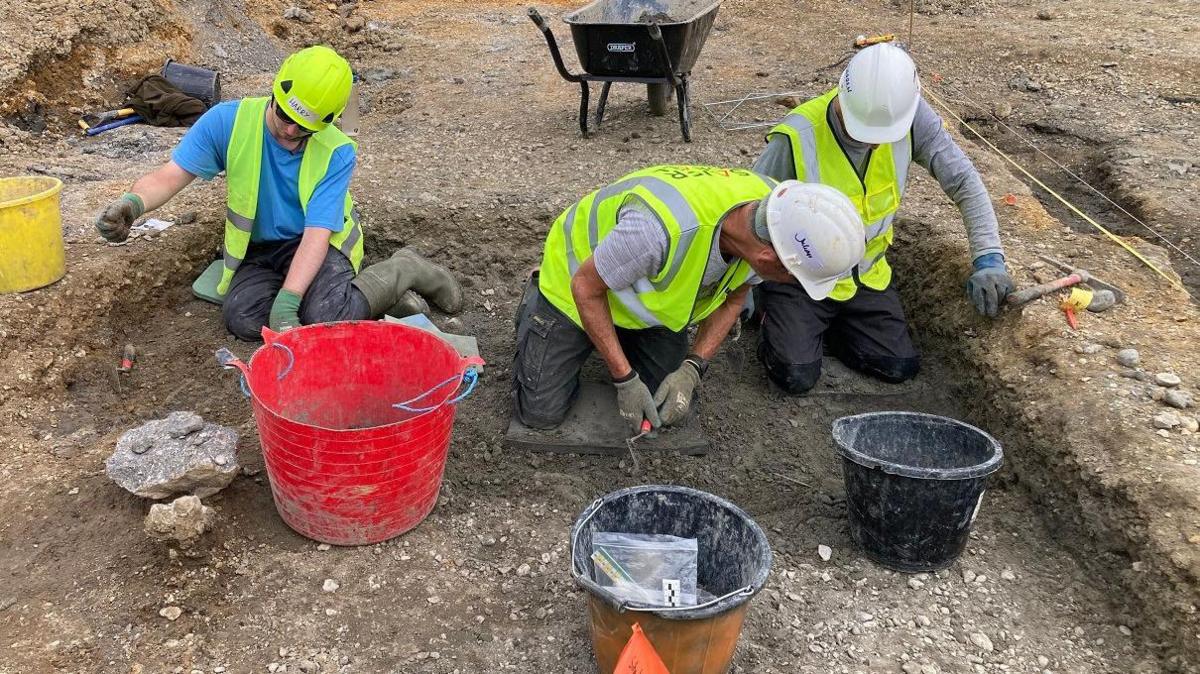
Students from around the country have joined the dig
Experts and volunteers have been joined by students from around 20 universities across the country, with many of them camping at the dig.
Sally Hollingworth, dig leader on the project, said: "It's a unique opportunity for them to be involved in not only the fieldwork and excavation, but also cataloguing and conservation of the finds afterwards."
Bristol University student Evan Cozens, said "It’s indescribable how incredible an opportunity it is.
"You don’t get anything like this anywhere else, perhaps in the world. To be a part of this so early on in my career is invaluable.
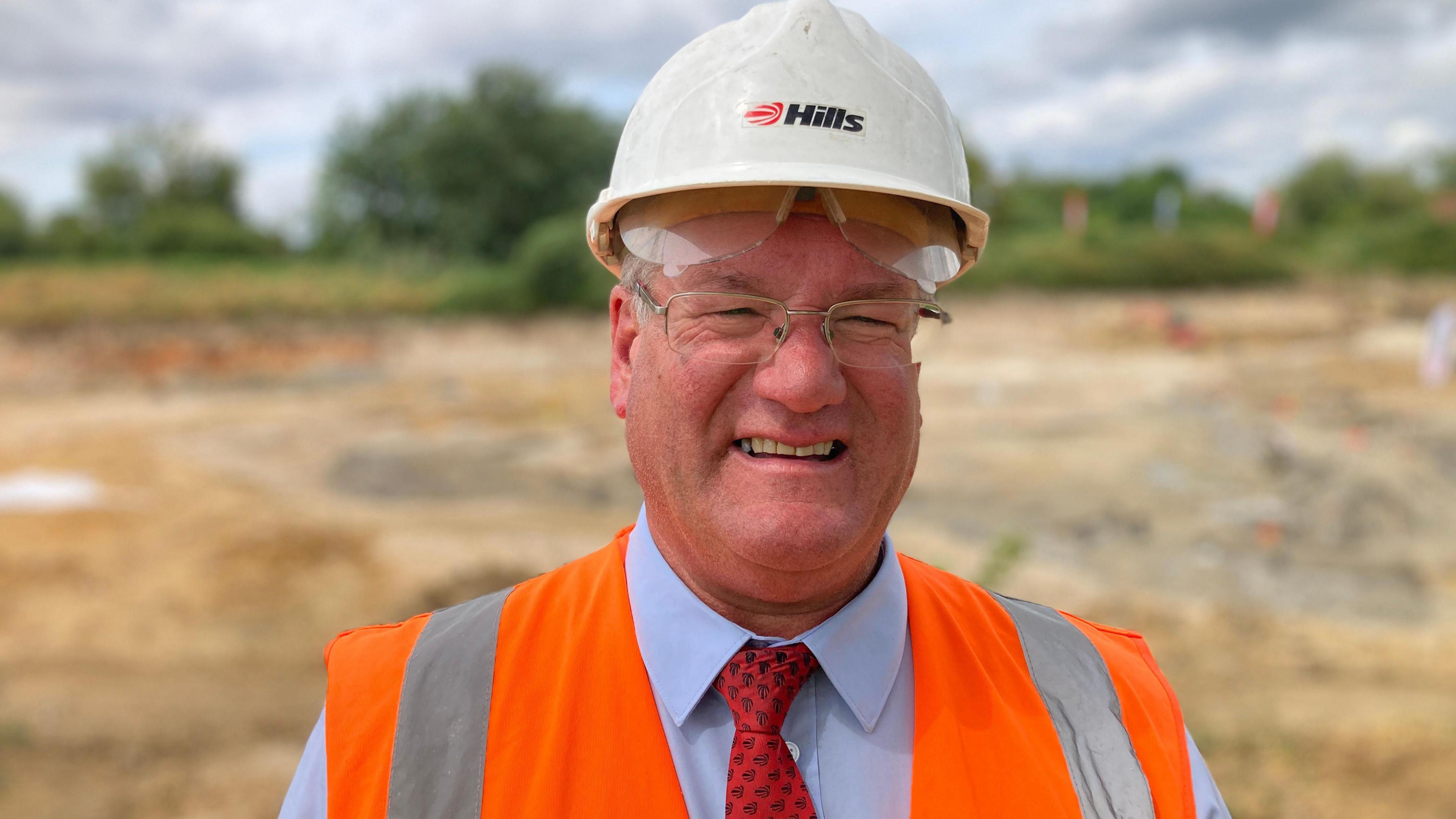
Peter Andrew said the team have been "so lucky" to find the site
"This is the site that keeps on giving," said Peter Andrew, group director of Hills Quarry Products.
“We’ve been so lucky here. Finding it in the first place, but this year the opportunity to get the students along has been fantastic."
'Incredible'
"You never know what you’re going to find but I had an inkling on this dig and we’ve found far more than we ever expected" said Dr Neville Hollingworth.
"It’s all added to the pieces of the jigsaw for this site and what lived and died here.
"The Neanderthal axes that we’ve found, all the Jurassic fossils that are coming out too, the history is incredible."
The dig is due to finish by 5 August and then the research and conservation of all the finds will be carried out.
Get in touch
Tell us which stories we should cover in Gloucestershire
Follow BBC Gloucestershire on Facebook, external, X, external and Instagram, external. Send your story ideas to us on email or via WhatsApp on 0800 313 4630.
Related topics
- Published7 September 2023
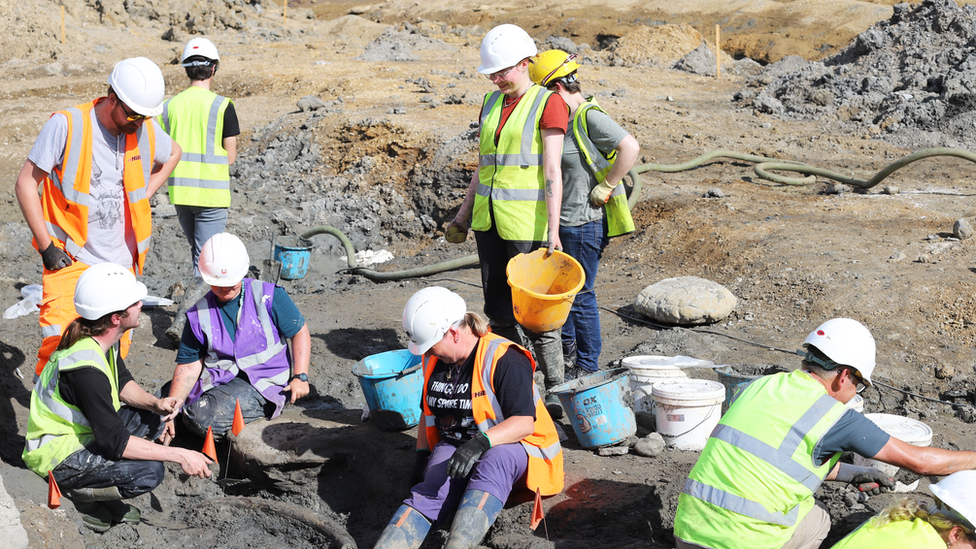
- Published13 July 2022
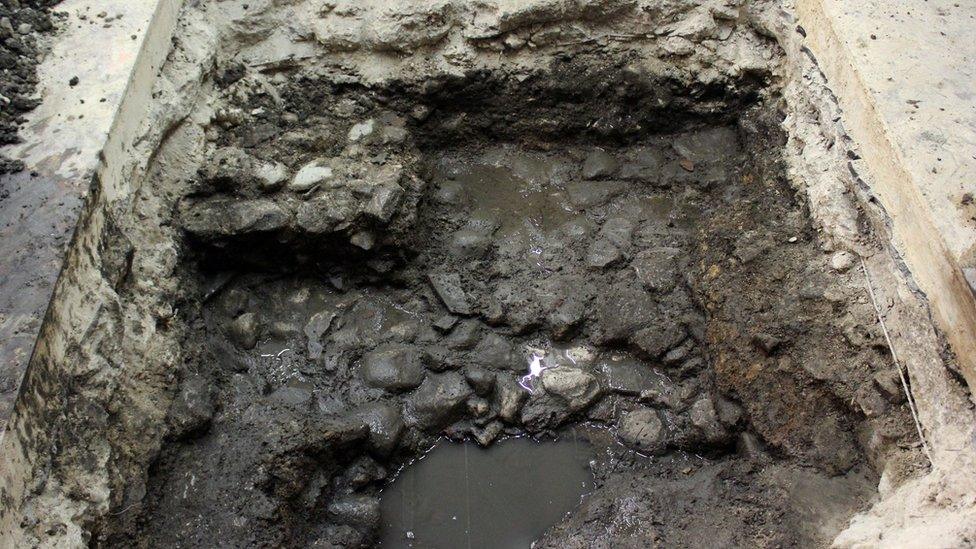
- Published3 February 2022
